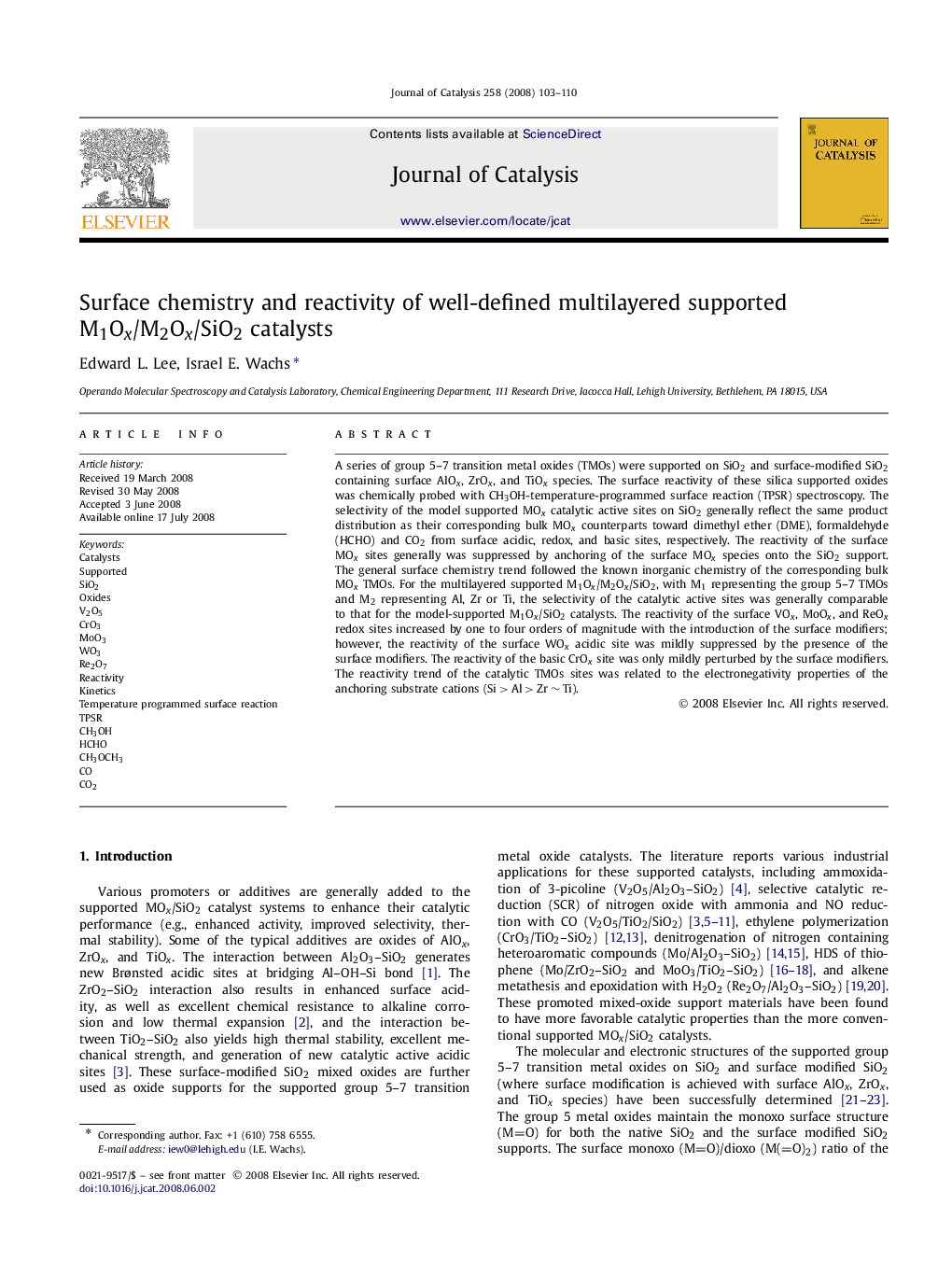| Article ID | Journal | Published Year | Pages | File Type |
|---|---|---|---|---|
| 62933 | Journal of Catalysis | 2008 | 8 Pages |
A series of group 5–7 transition metal oxides (TMOs) were supported on SiO2 and surface-modified SiO2 containing surface AlOx, ZrOx, and TiOx species. The surface reactivity of these silica supported oxides was chemically probed with CH3OH-temperature-programmed surface reaction (TPSR) spectroscopy. The selectivity of the model supported MOx catalytic active sites on SiO2 generally reflect the same product distribution as their corresponding bulk MOx counterparts toward dimethyl ether (DME), formaldehyde (HCHO) and CO2 from surface acidic, redox, and basic sites, respectively. The reactivity of the surface MOx sites generally was suppressed by anchoring of the surface MOx species onto the SiO2 support. The general surface chemistry trend followed the known inorganic chemistry of the corresponding bulk MOx TMOs. For the multilayered supported M1Ox/M2Ox/SiO2, with M1 representing the group 5–7 TMOs and M2 representing Al, Zr or Ti, the selectivity of the catalytic active sites was generally comparable to that for the model-supported M1Ox/SiO2 catalysts. The reactivity of the surface VOx, MoOx, and ReOx redox sites increased by one to four orders of magnitude with the introduction of the surface modifiers; however, the reactivity of the surface WOx acidic site was mildly suppressed by the presence of the surface modifiers. The reactivity of the basic CrOx site was only mildly perturbed by the surface modifiers. The reactivity trend of the catalytic TMOs sites was related to the electronegativity properties of the anchoring substrate cations (Si > Al > Zr ∼ Ti).
